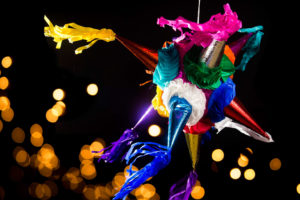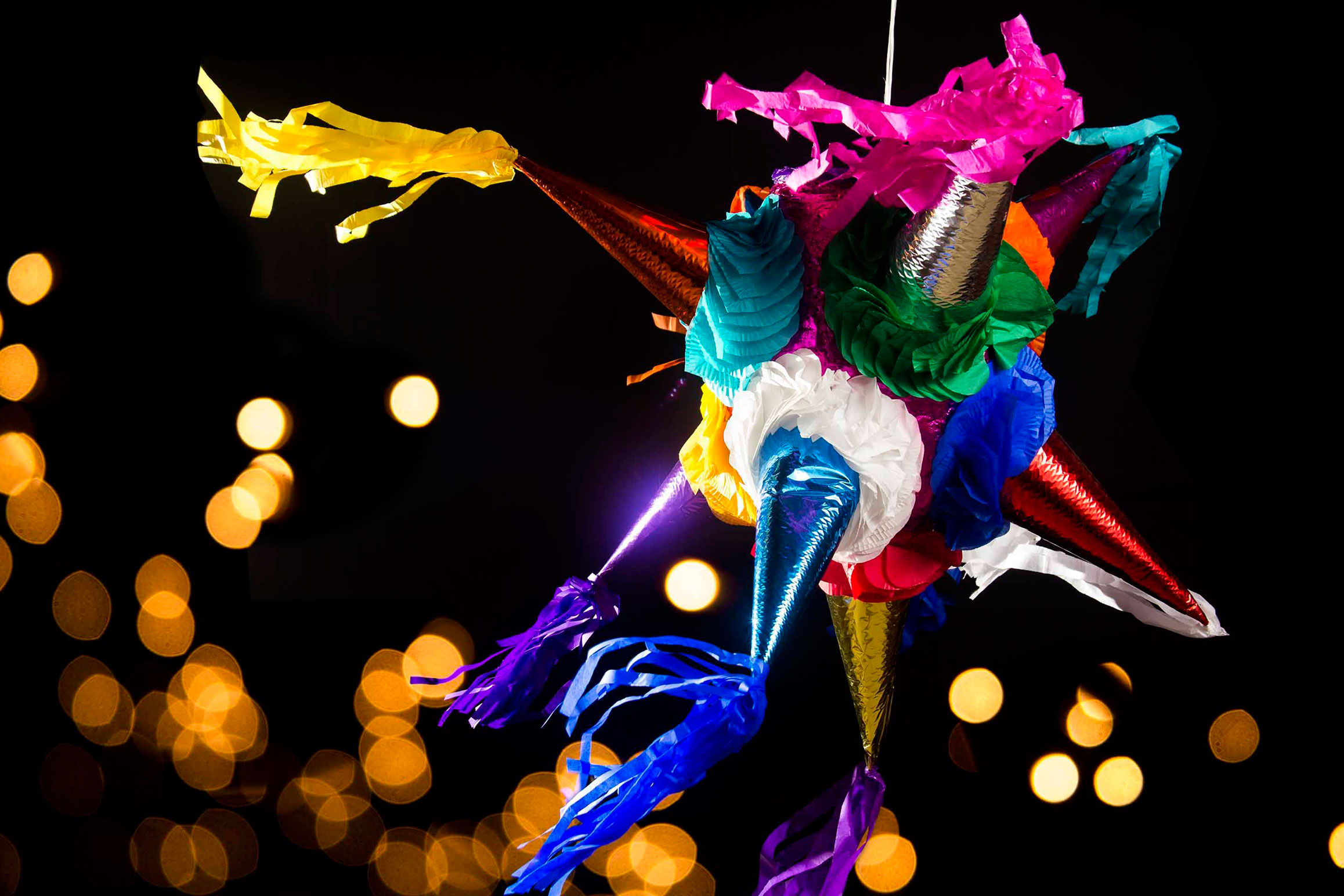From the fun and traditional posadas to the piñata, going through the habit of rocking the child and the same poinsettia flower, the holiday season has a lot of flavor to Mexico.
POINSETTIA
Did you know that this flower is Mexican? Yes, its indigenous name is Cuetlaxochitl, from Nahuatl cuetlahui which means “wither” and xóchitl, “flower”. It is the flower that withers. The Aztec priests contemplated this flower before initiating a ceremony. It was also the symbol of new life, reached by warriors killed in battle. They said that these warriors returned to earth to sip the honey from this flower. In addition, macerated petals mixed with oxtle (pine resin, ocote) and another substance for dyeing leather and some textiles were used.

It exists in the wild in the states of Guerrero, Chiapas and Oaxaca, where it is native and semi wild in the vicinity of the villages where it is grown. Currently it is known as fire flower, Santa Catarina flower, poinsettia flower, Catalina flower and flag flower. Also in other countries it is known as poinsettia in memory of Joel R. Poinsett, US ambassador to Mexico in the first half of the nineteenth century, who sent seeds of this flower to Charleston, in the year 1828 and which subsequently spread. to Europe. In December 1899 St. Peter’s Basilica in the Vatican was decorated with Christmas Eve flowers.
THE PIÑATA
From the verb huddle, bind, gather, the name of the piñata is derived from the word “pineapple”, fruit that symbolizes this toy, although over time it was sought to imitate animals and other fruits. The Italian pignata was present since the first Christmas in New Spain. The Mexican artisans took the pots and transformed them, with the paper of china, into a myriad of objects.
The missionaries took advantage of the Aztec tradition to convert the indigenous to the Catholic religion and, in a certain way, to dominate them. Thus, they compared the clay pot that is inside the piñata with the evil that is found inside human beings and which can not be seen because it is hidden among many ornaments.

With respect to the seven peaks that adorn it, they represent the capital sins: pride, greed, lust, anger, gluttony, envy and laziness. These sins must be counteracted by practicing the contrary virtues: humility, generosity, poverty, patience, temperance, charity and diligence.
The person who hits the piñata represents the believer who with his faith, who is blind (so he is blindfolded) and with the grace and help of God (that is why he has a stick) beats evil until he destroys it . Thus, let out all the blessings, talents and values that God gives to those who believe in him to fight against evil. These benefits are represented by the sweets and fruits of the piñata as a gift.
THE BIRTH
It is difficult to pinpoint its origin accurately. Some sources claim that the first presentation of the manger dates back to the beginnings of the Christian era, by the year 345, in a Lateran tomb; while the seventh century mentions an old Bethlehem, in Santa Maria Maggiore in Rome, where, apparently, there was a small oratory with a structure similar to the manger cave.
However, the popular custom of representing births was the initiative of San Francisco de Asís, who between 1200 and 1226 gave definitive impetus to this way of celebrating Christmas. With the permission of Pope Honorius III, he arranged an altar in front of a cave and a manger. The shepherds of the neighborhood went there on Christmas night and the great recognition he enjoyed caused the order to adopt the practice. Thanks to the arts, theatrical performances and the dissemination of the Franciscans, the Nativity scene was introduced in Spain in the 14th century. The city of Naples stood at the head of the movement.

In Mexico the custom was implemented by the friars who accompanied the conquerors, who made it an invaluable weapon for evangelization. And of that luck, with subtle adaptations to the indigenous idiosyncrasy, the missionaries introduced the births as theater works. Fray Pedro de Gante, in his school in Texcoco, trained the natives in the elaboration of figures of the Births for these processions. For two centuries the tradition was practically reserved, but in the mid-nineteenth century they reappeared with great popular strength. Today you find them in a wide variety of materials, sizes and styles.
The habit of “cooing and sleeping the Child” before the Christmas Eve dinner is very Mexican. It symbolizes the birth of Jesus and his representation in the Birth.
Via Woman of 10






Leave A Comment